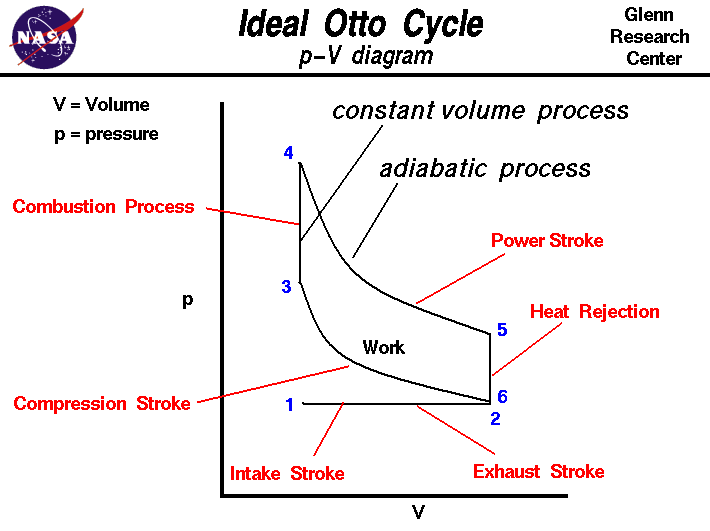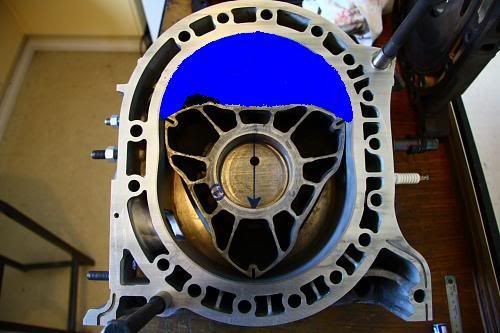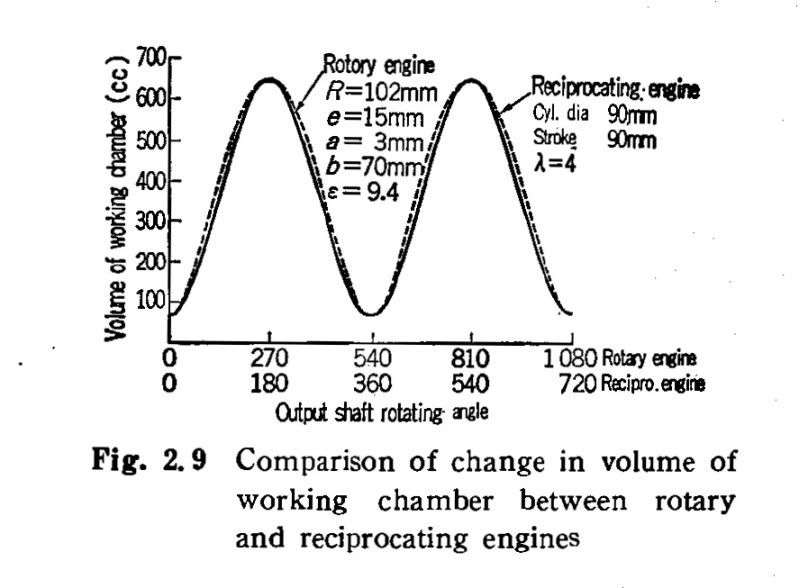|
|
|
|
#1 |
|
Rotary Fan in Training
Join Date: Aug 2010
Posts: 54
Rep Power: 16  |
Hey, nothing wrong with being a bit Narcissistic
 This topic went to much from its track and I already really don´t know what is being argued. Rice is right in everything he said. Some people may take it to personally, that he suggesting that 13B has capacity of 3.924 L, when everyone and his mother knows, that 13B is 1.308 L. Byt why arguing? This keyboard war doesn´t change fact, that 13B is fully and without any artificial factor comparable to: 1.3 L two stroke 2.6 L four stroke Should I post calculations of engine power, torque, BMEP etc.? Which clearly states that number of power pulses per time or revolution is essential? 
|
|
|

|
|
|
#2 |
|
Sigh.....
Join Date: Feb 2008
Location: Murfreesboro, TN
Posts: 2,377
Rep Power: 20  |
A bit, no, nothing wrong.
A lot, yes, something wrong. 
__________________
1986 Sport: 132k miles, 5A (Sapphire Blue Metallic), Tokico Blues, Racing Beat Springs, Custom LED tailights (only S4 LED tails in the world), SSR Mark II, Racing Beat exhaust, S5 black interior, Rotary Resurrection rebuild at 120k miles Community Service Manual RotorWiki "Imagination costs nothing; we could build square locomotives or fly to Mars" - Felix Wankel Yesterday is history, tomorrow is a mystery, but today is a gift. That is why it is called the "present." |
|
|

|
|
|
#3 | |
|
Still Building my FD
Join Date: Jun 2009
Location: Pasco, WA
Posts: 255
Rep Power: 17  |
Quote:
You are talking "equivalences and similarities" in relation to different styles of internal combustion engines... not Physical Displacement per revolution of the crankshaft. The reason a rotary is comparable to a 1.3l 2 stroke is that it fires its full displacement each revolution. The reason it is comparable to a 2.6l 4 stroke is because it separates the strokes and ignites the "equivalent" amount of displacement as a 2.6l 4 stroke each revolution. But using your logic, a 2.6l 4 stroke is comparable to a 1.3l 2 stroke, and a 5l 2 stroke is comparable to a 10l 4 stroke. The fact of the matter is they are different types of ICE's, which means they will have differences and similarities. Doesn't change how displacement is calculated. If 2 stroke versus 4 stroke changed how displacement was measured, then you better let the engine industry know they've been doing it wrong. lol. a kx500 is in fact a 500cc 2 stroke engine, but it you changed the ignition and head to a 4 stroke system... would that automatically make it something else? No. the bore area and stoke didn't. it still displaces 500cc in one crankshaft revolution. Tis is how it is done. I honestly don't see the argument here. Even in your examples: "engine power, torque, BMEP" is not used at all in calculating displacement. Guess what it is used for? Taxation and racing classes, to even the playing field. And "power pulses per revolution" again has nothing to do with displacement. If it did, then a 500cc 2 stroke engine would only be a 250cc 4 stoke engine. But, this is inherently incorrect, as again, the stroke (distance of piston vertical travel) and bore area did not change. Please don't take this post as an attack, but as you said, a 13b is just that. a 1.3l. while it may share similarities with different sized engines due to its type, it is still just a 1.3l. Under no standardized definition of internal combustion engine displacement will a 13 be anything other than 1.3l. Similarities do not change how physical displacement is measured. Remember, displacement is derived from a constant that all of the mentioned engines share: The crankshaft/centershaft/eshaft rotation is used to transfer power from the engine to the rest of the drivetrain. This is the reason displacement is measured by one rotation/revolution of this crankshaft/centershaft/eshaft.
__________________
Uh.... hi. Last edited by Monkman33; 06-06-2011 at 02:34 PM. |
|
|
|

|
|
|
#4 |
|
Still Building my FD
Join Date: Jun 2009
Location: Pasco, WA
Posts: 255
Rep Power: 17  |
if you count every face, then you are using 3 rotations of the shaft, which now means you are using a different method of calculating displacement than every other engine.
This is why there is a standard: What does an engine displace per revolution of the shaft?
__________________
Uh.... hi. |
|
|

|
|
|
#5 |
|
I have radioactive semen
Join Date: Jul 2008
Location: in a bottle of Glenfiddich
Posts: 250
Rep Power: 18  |
^ understood.
 but what i'm saying is the crank rotations are not relevant - at least, if they are, i don't see it. for example, my manipulation of the 86 mm x 86 mm MR2 engine, simply yield roughly 499.5... cc per cylinder, which i then multiply by 4 and get 1998 cc. engine revolutions never figured into it. if this engine block were used with a 2-stroke or 4-stroke head, it's still 1998 total capacity. the rotary does require 3 complete revolutions to fire all 6 faces, but i don't see how that affects total capacity, which is in fact 6 chambers, and it is the volume of those 6 chambers that yield it's total capacity/displacement. it's just the way i see. |
|
|

|
|
|
#6 | |
|
RCC Loves Me Not You
Join Date: Jul 2008
Location: Influx.
Posts: 2,113
Rep Power: 20  |
Quote:
 http://www.grc.nasa.gov/WWW/k-12/airplane/otto.html Each face sees that otto cycle after 3 revolutions of the crank shaft. There's no two ways about it. That's what each face sees. Thus the total displacement for all 6 faces comes out to the 4L or so that Rice posted up. Now here's where I think everyone is getting messed up: As I posted previously each piston engine calculates displacement by going from tdc to bdc of each individual piston. Now lets compare this to the 13B. How many times do we have to turn the crank shaft to go from TDC to BDC for the front rotor housing (note I didn't say each individual face)? 1 right? 1 turn takes the front rotor from TDC to BDC, while the rear rotor is 180* out of phase (thus displacing the same amount). From which we have the standard nomenclature of 1.3L of displacement. Does this make sense to everyone? This method is scalable as well. To think of this clearly do not consider the rotor faces as pistons, but rather the rotor as a whole as equivalent to a piston (or think of the rotor housing as the piston equivalent sleeve). If the 20B were to be calculated using the method described above you would simply take the TDC to BDC of the front rotor (aka 1 revolution). Since all other rotors move the same amount with that 1 revolution they displace exactly the same amount of air. If you do not like that procedure simply take TDC to BDC of each rotor (they only take one revolution each) and it will displace the same amount of air. This is where the Mazda Displacement rating came from. This is the number you use (at least on the Haltech) when you put in the engines displacement. There's no black magic here.
__________________
The Official FC Radiator Thread My Project Thread: Cerberus CCVT Virginia Rotary Group Last edited by vex; 06-06-2011 at 07:39 PM. |
|
|
|

|
|
|
#7 | |
|
Rotary Fanatic
Join Date: Feb 2008
Location: Slidell, LA
Posts: 191
Rep Power: 18  |
Quote:
(Using a VE of 100)it would be 654cc... and it would look like this, but the VE would actually be lower because of the still opened intake port and the trailing spark-plug hole spit-back.  For a KX 500 2-stroke... 500cc... and it would look like blue bore depicted. It's actual VE would be much lower also because both intake and exhaust are open for part of the stroke (Consider what the effective compression ratio while starting).  For the 2 liter Toyota…. 500cc For the 6 liter LS motor… 750 cc These pictures are mostly for the new guys that are a little afraid to raise their hands and get into the discussion... yet. I opened Rotarygod's web site. It is well done and he makes his case for 2X and 3X displacement, but you will notice that all references to the different engine sizes are exactly what the manufacturer calls them. This was the point of my initial post… if we don’t use a standard way of describing the Rotary’s displacement in our discussions we will be confusing ourselves, especially neophytes. Barry |
|
|
|

|
|
|
#8 |
|
RCC Loves Me Not You
Join Date: Jul 2008
Location: Influx.
Posts: 2,113
Rep Power: 20  |
That's an idealized otto cycle Barry. For all engines there's going to be descrepancies and variations from that. I don't think there's a p-v diagram out ther for the 13B at least not to my knowledge. I'll have to check the SAE papers.
__________________
The Official FC Radiator Thread My Project Thread: Cerberus CCVT Virginia Rotary Group |
|
|

|
|
|
#9 | |
|
Rotary Fanatic
Join Date: Feb 2008
Location: Slidell, LA
Posts: 191
Rep Power: 18  |
Quote:
The piston engine's rod ratio will affect its shape vs. the Rotary's sine wave movement. (Dotted line-rotary, from Yamamoto's book) 
|
|
|
|

|
|
|
#10 |
|
Still Building my FD
Join Date: Jun 2009
Location: Pasco, WA
Posts: 255
Rep Power: 17  |
the reason the displacement is usually calculated on 1 rotation is because that is the best way to compare on a consistent basis.
While I agree that you bring up very good points, I also maintain my stance. However, as usual, every darned thing is always a bit different when it comes to these engines. I doubt we'd ever see a thread like this on any other type of forum.... aside from jet turbines. :-) By the way, that diagram is great! As far as the argument that the engine is technically a 3.9l is extremely strong because of that. However, I think that figure would be divided by 3 to make it equivalent to its piston engine counterparts. But I am no expert. When it comes down to it, the only argument that I see as truly weak is the argument that it could be a 2.6l. 1.3 for1 crank rotation. 3.9 for total of all faces regardless of number of rotations. I am too the point where I am willing to accept either of those.
__________________
Uh.... hi. |
|
|

|
|
|
#11 | |
|
RCC Loves Me Not You
Join Date: Jul 2008
Location: Influx.
Posts: 2,113
Rep Power: 20  |
Quote:
__________________
The Official FC Radiator Thread My Project Thread: Cerberus CCVT Virginia Rotary Group |
|
|
|

|
|
|
#12 |
|
I have radioactive semen
Join Date: Jul 2008
Location: in a bottle of Glenfiddich
Posts: 250
Rep Power: 18  |
vex ~
again, in as much as i understand what you have said in your post (i'll still need some time to understand the Otto cycle graph you posted  , but i haven't read the accompanying link yet) i can't disagree with what you're saying. in fact, i agree wholeheartedly. i guess the problem with me is that i agree with all the points of view because the lines of comparison are blurred. , but i haven't read the accompanying link yet) i can't disagree with what you're saying. in fact, i agree wholeheartedly. i guess the problem with me is that i agree with all the points of view because the lines of comparison are blurred.however, it still comes down to our individual perceptions on where the lines of comparison (rotors vs. pistons) are to be drawn. i suppose the best thing may be making no comparisons at all, but it's probably not going to happen. i've never thought of the housing surface as one cylinder (sleeve), so that is yet another point of view to consider - and in that context it is quite consistent with 1308. it's new, at least to me it is. i don't see it as any more (or less) right as any of the other points of view. that said, it makes sense with the TDC-to-BDC definition of displacement. the eccentric shaft only allows one TDC per rotor and that would also be the reason why you said the rotor should be treated like a piston. i get that. again, it's not that i reject any of the other assertions, i just find myself gravitating to the 3.9 more than the others. for what it's worth, regardless of what i posted before (or in the future) about the 3.9 displacement theory, i do still consider our beloved 13B to officially be a 1.3L powderkeg of fury - just not in an absolute sense. as far as what to consider any of the rotary engines, i believe Mazda's final and absolute determination trumps mine any day and i'm good with that. |
|
|

|
|
|
#13 |
|
Still Building my FD
Join Date: Jun 2009
Location: Pasco, WA
Posts: 255
Rep Power: 17  |
You cant "just ignore" the rotation factor. its the only way to create something consistent and precisely equivocal between the two styles of internal combustion engines. If you want to compare the two engine types, you have to have a constant. What is more constant than the point that transfers the power from the point of generation to the drivetrain?
If you don't want to compare the rotary to a piston engine, then i feel that 3.9l could very well be more accurate in the aspect that in 3 rotations it does displace 3.9l.
__________________
Uh.... hi. |
|
|

|
|
|
#14 | |||||||||
|
RCC Loves Me Not You
Join Date: Jul 2008
Location: Influx.
Posts: 2,113
Rep Power: 20  |
Quote:
Quote:
Quote:
Quote:
Quote:
Quote:
Quote:
Quote:
Quote:
__________________
The Official FC Radiator Thread My Project Thread: Cerberus CCVT Virginia Rotary Group |
|||||||||
|
|

|
|
|
#15 |
|
Still Building my FD
Join Date: Jun 2009
Location: Pasco, WA
Posts: 255
Rep Power: 17  |
wow. very well thought out response. I will definitely take much of this into consideration now. (yes, I am admitting that my perspective on this topic has shifted a bit)
My only argument would be that at this point, each rotor face could be considered the equivalent of a piston as to tdc and bdc. Or perhaps it is tdc/bdc of the crankshaft rotation since each piston or rotor face would be in a different position. These are just merely perspective questions to further define baseline definition and procedure and not to discredit or debase.
__________________
Uh.... hi. Last edited by Monkman33; 06-06-2011 at 11:06 PM. |
|
|

|
 |
| Bookmarks |
|
|